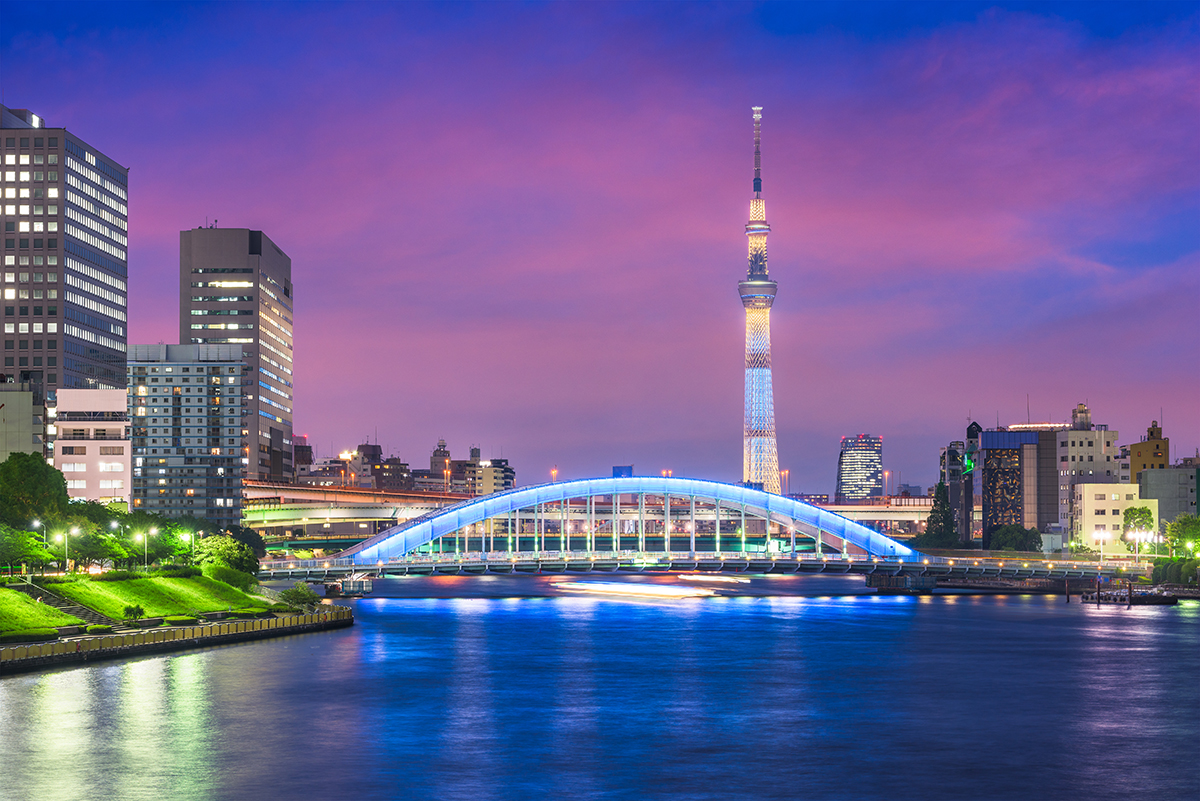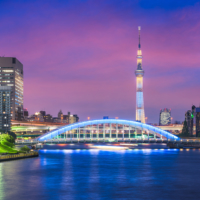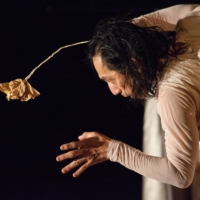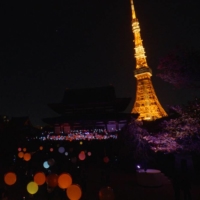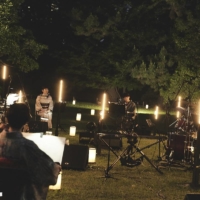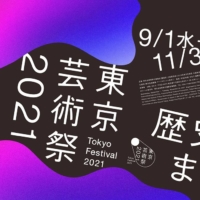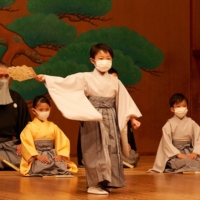Still fresh in our memories are the Tokyo 2020 Olympic and Paralympic Games, which had their grand finale in September 2021. With the legacy created through the Games, what sort of city should Tokyo aim to be in the future, both after COVID-19 and in the decades to come? And what role can the arts and culture play in realizing Tokyo’s potential? The answers call for a city in which the traditions of old Edo and advanced modern life coexist, full of sightseeing attractions, open locations and familiar places that delight both visitors and residents. It will be an inclusive, flexible place that takes the lessons of COVID-19 to heart and moves vigorously ahead by maximizing the strength of the city’s cultural charm.
One initiative behind this vision is the Tokyo Tokyo Festival (TTF), which was intended to showcase Tokyo’s role as a hub of art and culture through a group of programs that took place in the run-up to the Games. One government official noted: “Despite the constraints of COVID-19, we developed numerous cultural programs by changing the scale and nature of workshops, viewing methods and events, as well as through online inclusion, thereby bringing the attractiveness of Tokyo to a wide audience both at home and abroad.”
Lucky 13
The TTF Special 13 was a group of 13 projects chosen from 2,436 proposals received from domestic and overseas sources through an open call. Conceived by the Tokyo Metropolitan Government and the Arts Council Tokyo, the projects transcended particular genres and served to enliven the Games as well as create a cultural and aesthetic legacy that can be harnessed to maximize the “soft power” of the city going forward.
When selecting the TTF Special 13, innovation, creativity and value for the future were considered. The projects were also assessed with an eye to their overall inclusiveness and universal accessibility, as well as their balance of tradition and innovation. They all reflect the vision of “a future Tokyo that is attractive to the whole world, offering enjoyment, happiness and exuberance in daily life.”
A closer look at three of the 13 projects reveals the dazzling range of the creative endeavors that came to life in Tokyo.
‘Tokyo Real Underground’
What is the actual meaning of “underground?” Is it just a term for physical space, or is it more a frame of mind? “Tokyo Real Underground” (TRU) showed that both answers are correct, in their own way, even as the event pointed the way beyond in a synthesis of space and motion.
TRU artistic director Takao Kawaguchi has gone to great lengths to infuse TRU with vitality despite the challenges posed by COVID-19. “People used to say that what makes a performance come alive is to be soaked in the sweat of the artists,” Kawaguchi noted. He described how to achieve this effect through the skillful use of technology, such as camerawork that makes the most of different angles and captures the performers’ bodies at extremely close range, almost “as if they are being stalked.”
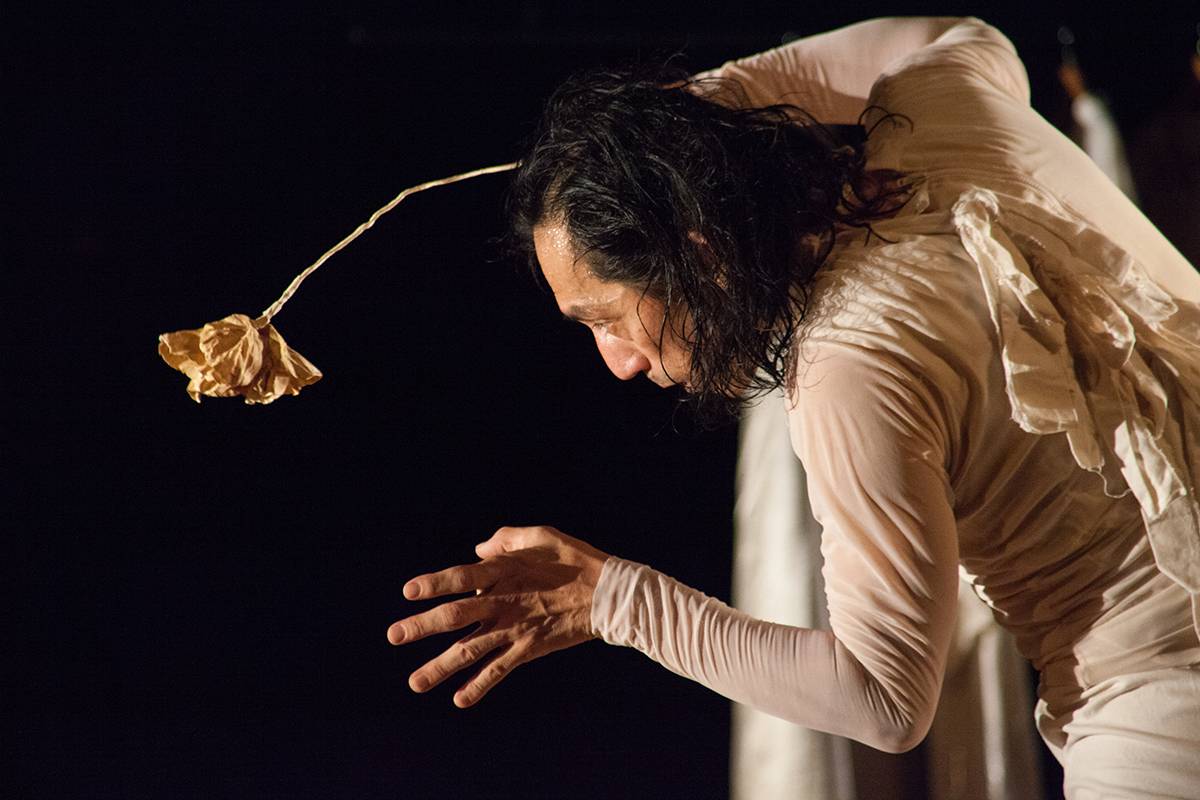
At the heart of TRU is the art of butoh, a type of avant-garde Japanese dance theater that first arose in the 1960s. Almost by its very nature, butoh defies description, but it is known for its slow movements, white-painted performers and bodily motions that often seem premodern or inspired by primitive roots of dance.
Since its inception in Japan, butoh has grown to become internationally famous. TRU broke with some of these conventions, freeing butoh from the studio and theater and placing it in urban locations where it could be interpreted for a new generation. The fact that butoh emerged around the time of the 1964 Tokyo Games provided the backdrop for TRU’s reconfiguration of the art for the 2020 Games. By holding performances in “underground” areas without audiences, such as underpasses, a former train station and an empty store, TRU examined the relationship between urban spaces, the body, motion and art. TRU also combined real movement with virtual elements, presenting a new form of the dance for the COVID-19 age through online events.
Light and Sound Installation ‘Coded Field’
With its stately facade, wide courtyard and imposing main gate, Zojoji temple evokes the city’s cherished past and hallowed traditions against the backdrop of iconic Tokyo Tower. For a short time in November 2019, this venerable space was transformed into something entirely unprecedented — a vision of Tokyo’s near future meeting with its revered past.
“Coded Field” was a light and sound installation that made use of scores of glowing spherical objects and interactive audio and light technology to interlock the movements of participants as they explored a field in front of the temple, triggering changes and transformations. The extremely precise location beacons distributed to the visitors gave rise to light and sound patterns based on the location data these devices emitted, making the features of the installation come alive in novel ways.
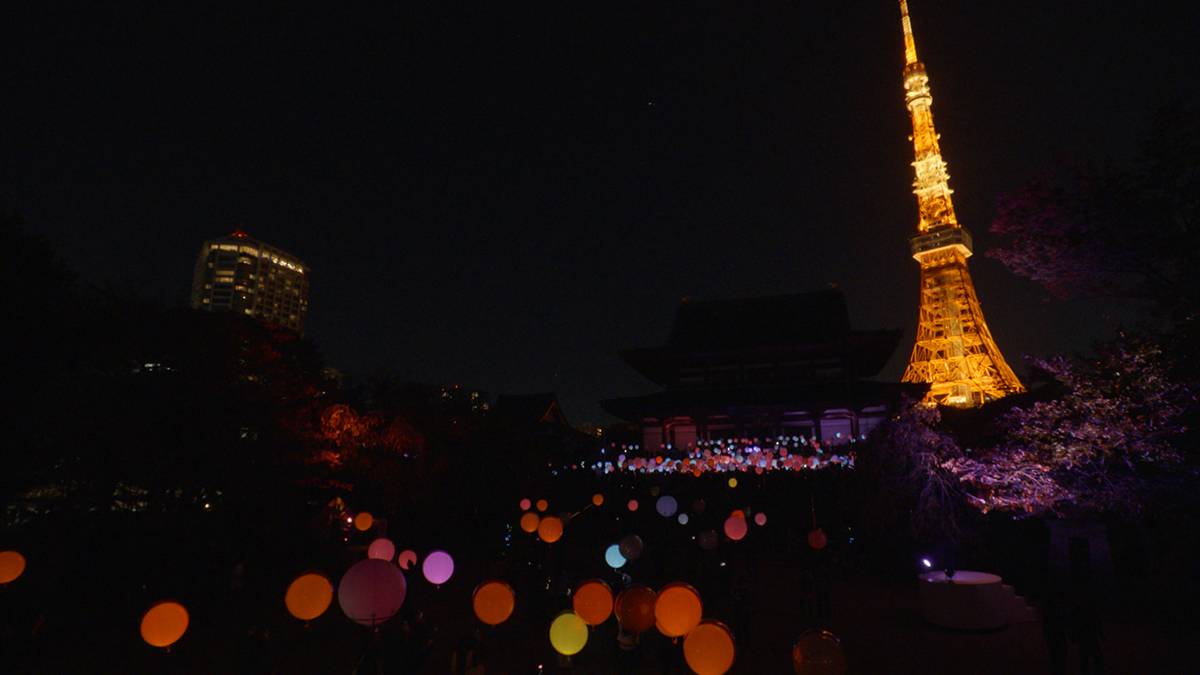
The project was the brainchild of the creative group Rhizomatiks, which describes itself as “a group with wide-ranging experience in design, art, architecture, mathematics and engineering.” Their works are intended to “forge the unexplored creative realms that will contribute to the advancement of art and society.”
Their use of high-precision technology pointed to Tokyo’s future, even as the echoes and glowing lights generated by the beacons highlighted the beauty of the temple grounds. The event was also noteworthy in that it could be enjoyed by people of all ages, delighting both children and the elderly with simple joy mediated through advanced technology.
‘Sumida River: Storm and Urge’
The Sumida River is one of the great waterways winding its way through central Tokyo. Known as an inspiration for the works of famous ukiyo-e artist Katsushika Hokusai, as well as kabuki performances in the Edo Period (1603 to 1868), the river has long been closely associated with the arts and culture. Famous landmarks such as Tokyo Skytree and Hama-rikyu Gardens also dot the river’s banks.
The river again became a source of cultural inspiration in a project called “Sumida River: Storm and Urge,” which presented a variety of artistic activities to promote human interaction throughout the course of the river downtown as well as online. Music, performances and installations paid homage to the Sumida’s long cultural heritage while vividly celebrating the contemporary arts scene.
For example, Masakatsu Takagi’s sound installation “Marginalia” involved playing recorded piano music performed by the artist so that it merged with the sounds of nature in a riverside park. “Dawn of the Sky,” a livestreaming event put on by various artists from midnight until sunrise, invited viewers to be virtually present on Skytree’s observation deck during this time, symbolizing the dawn of the post-COVID-19 era. Through these and other projects, the old river became a source of new life.
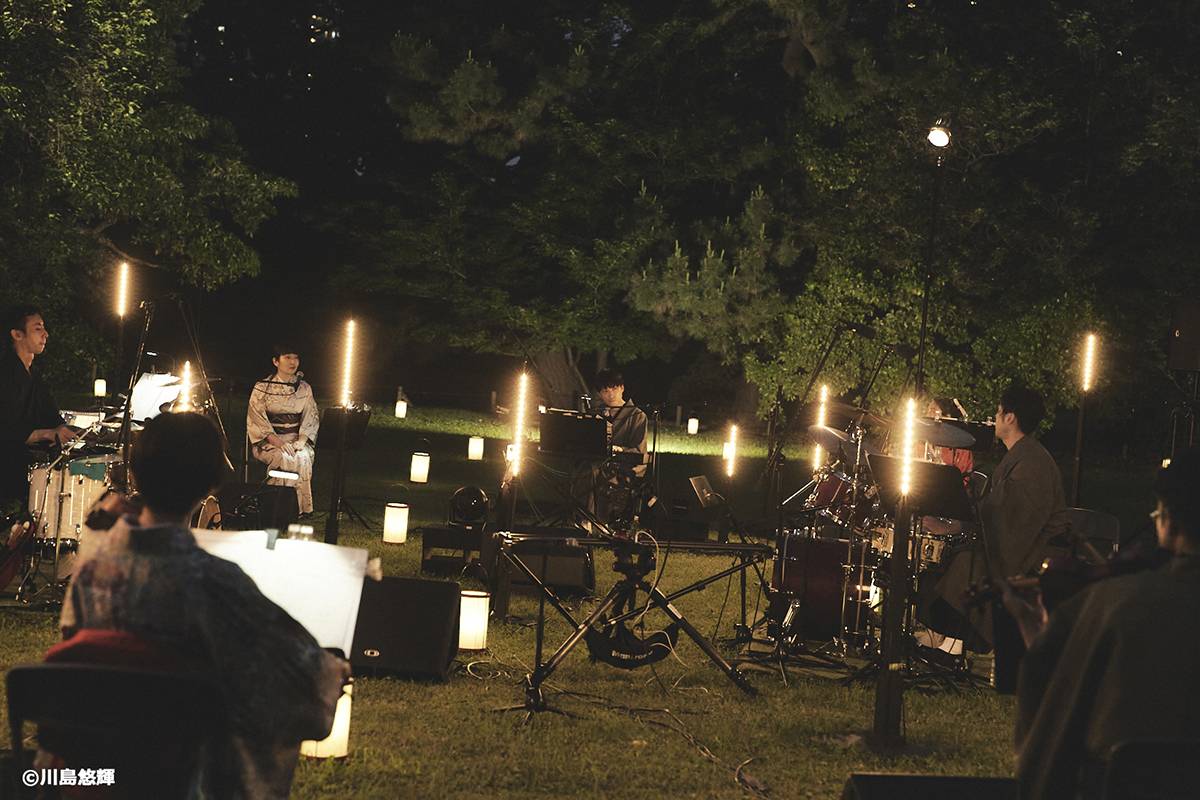
The event’s organizer, Ryoichi Kiyomiya of the nonprofit organization Topping East, spoke about the significance of the experience amid the coronavirus pandemic. “Under these conditions, it is of paramount importance to keep our human relationships intact. Never cease to dialogue, to visit with others, to express yourself. And we must also do everything we can to help others express themselves.”
A kaleidoscope of initiatives to come
Tokyo’s forward-looking art and culture continue to inspire new initiatives that celebrate the potential of this metropolis.
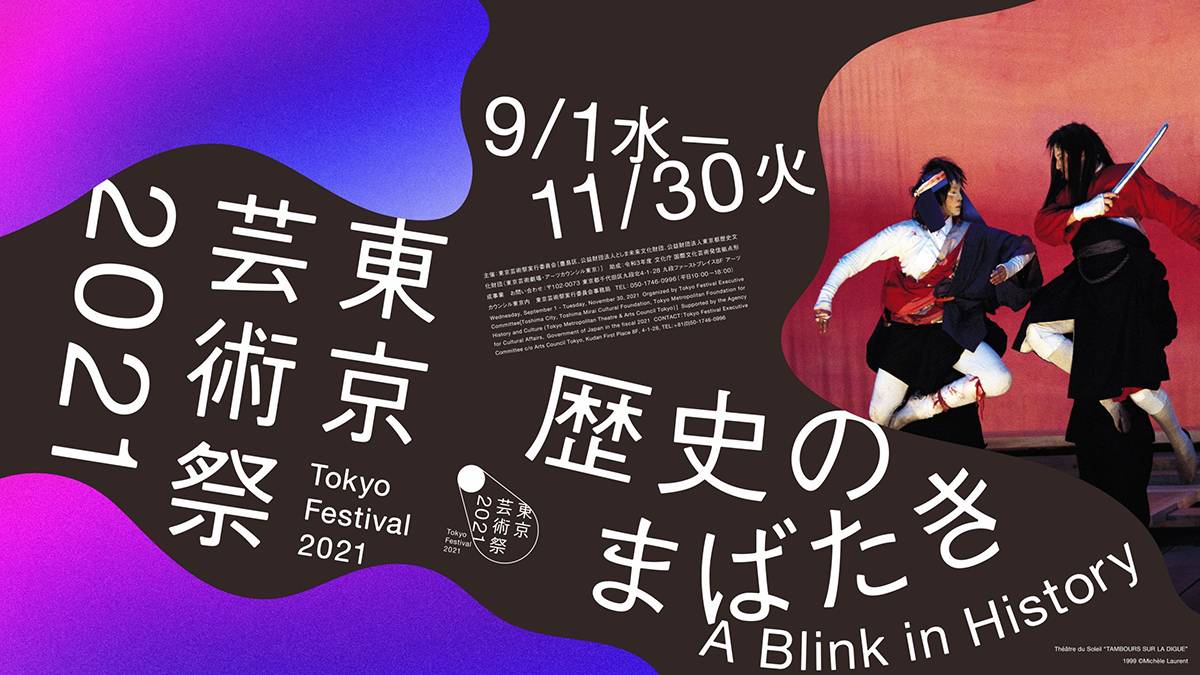
Tokyo Festival 2021 features an abundant array of programs from Sept. 1 to Nov. 30, both online and off. Located primarily in the Ikebukuro area, this art festival has something for everyone. The theme for this year is “A Blink in History,” referencing the overall transience of COVID-19 in the grand scheme of things, and the way each moment in time separates the past from the future. As well as introducing Tokyo’s art scene to the world, Tokyo Festival has mid- to long-term goals that entail “working on resolving social issues, developing human resources, developing urban areas and tackling globalization.”
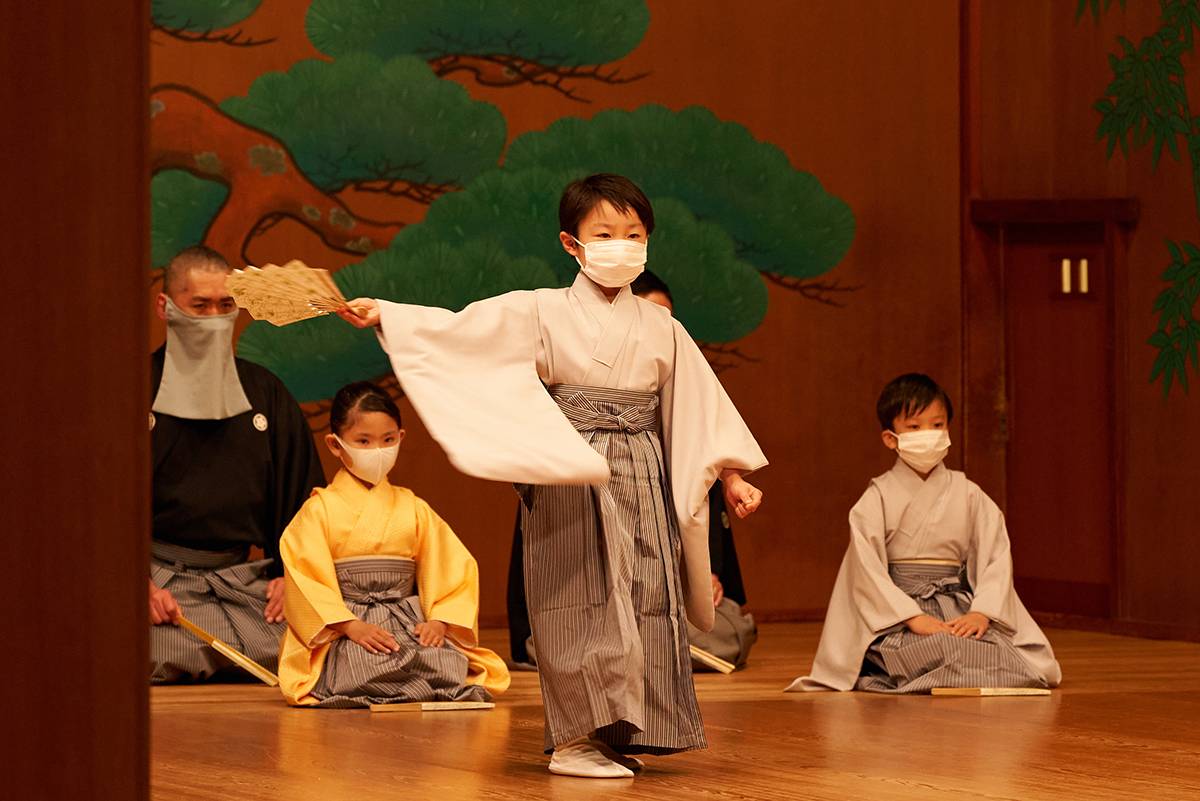
Also of note is the Traditional Performing Arts for Kids program. Over several months, participating children will receive direct instruction from leading performers in Japanese traditional arts before putting on a public performance. The program teaches children about core values, sensibilities and formalities that have been deeply cherished in Japan since ancient times. It is a way of handing the torch of tradition to a new generation while also enhancing the cultural cachet of Tokyo.
Sailing into a brighter future
Even as the coronavirus pandemic continues to pose challenges across the world, the Tokyo Metropolitan Government is looking ahead and promoting a strategy from the viewpoint of “sustainable recovery.” Rather than reverting to a pre-COVID-19 situation and mindset, the city will implement upgraded policies aimed at achieving a robust society that can respond to change with dexterity, even as it creates new forms of value for the future.
The governor of Tokyo, Yuriko Koike, has announced her intention to formulate a “cultural strategy” based on the results of the Tokyo Tokyo Festival and the experiences and knowledge gained from COVID-19.
Tokyo’s government and people are committed to “keeping the torch of art, culture and entertainment alight,” bringing enjoyment, excitement and cultural edification back to daily life and making the city even more attractive to a world that continues to hold it in admiration.
For more information, please visit the TTF Special 13, Tokyo Tokyo Festival and Arts Council Tokyo websites.
Check the latest news on Tokyo and Japan on Tokyo Updates.



